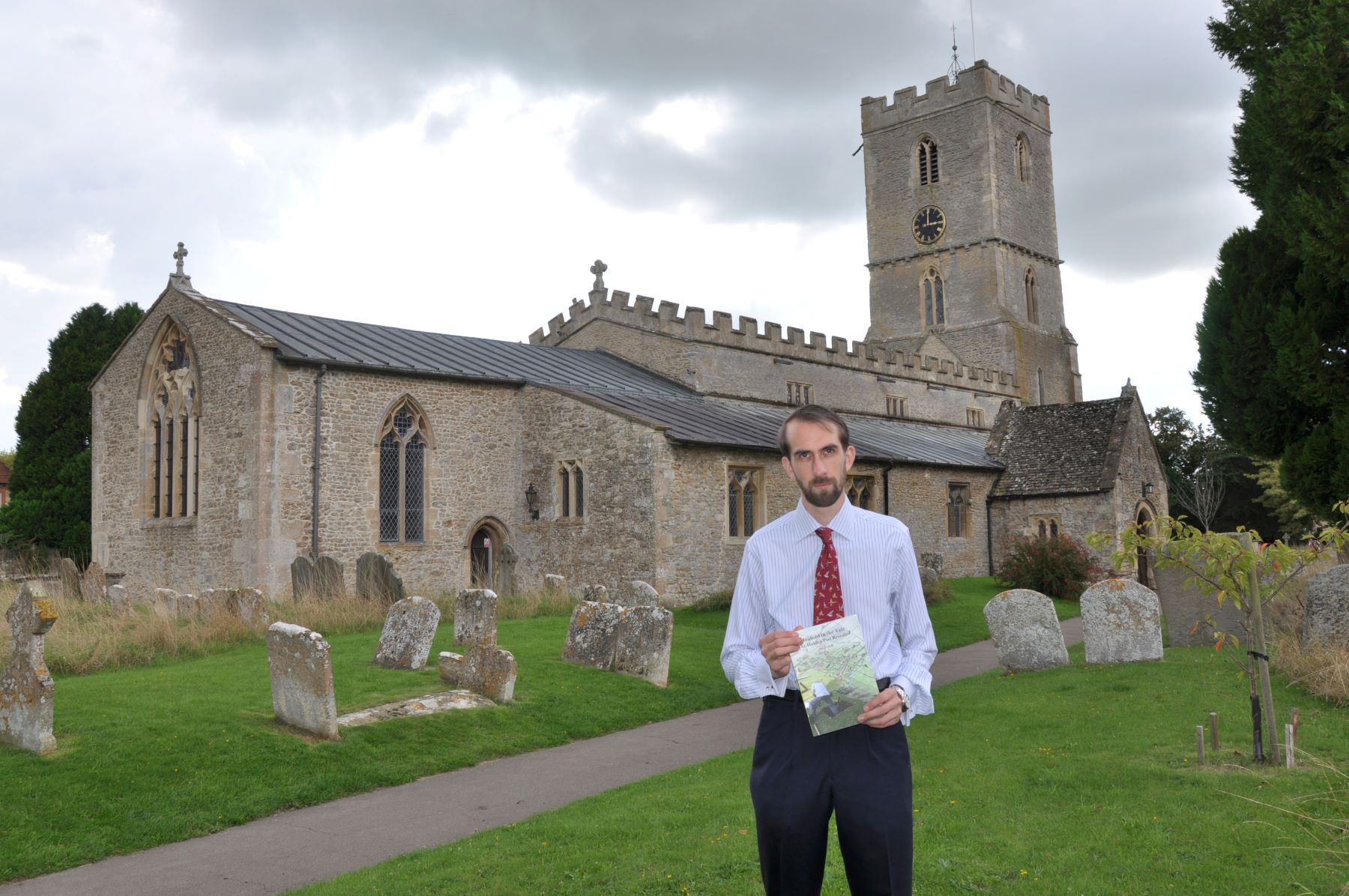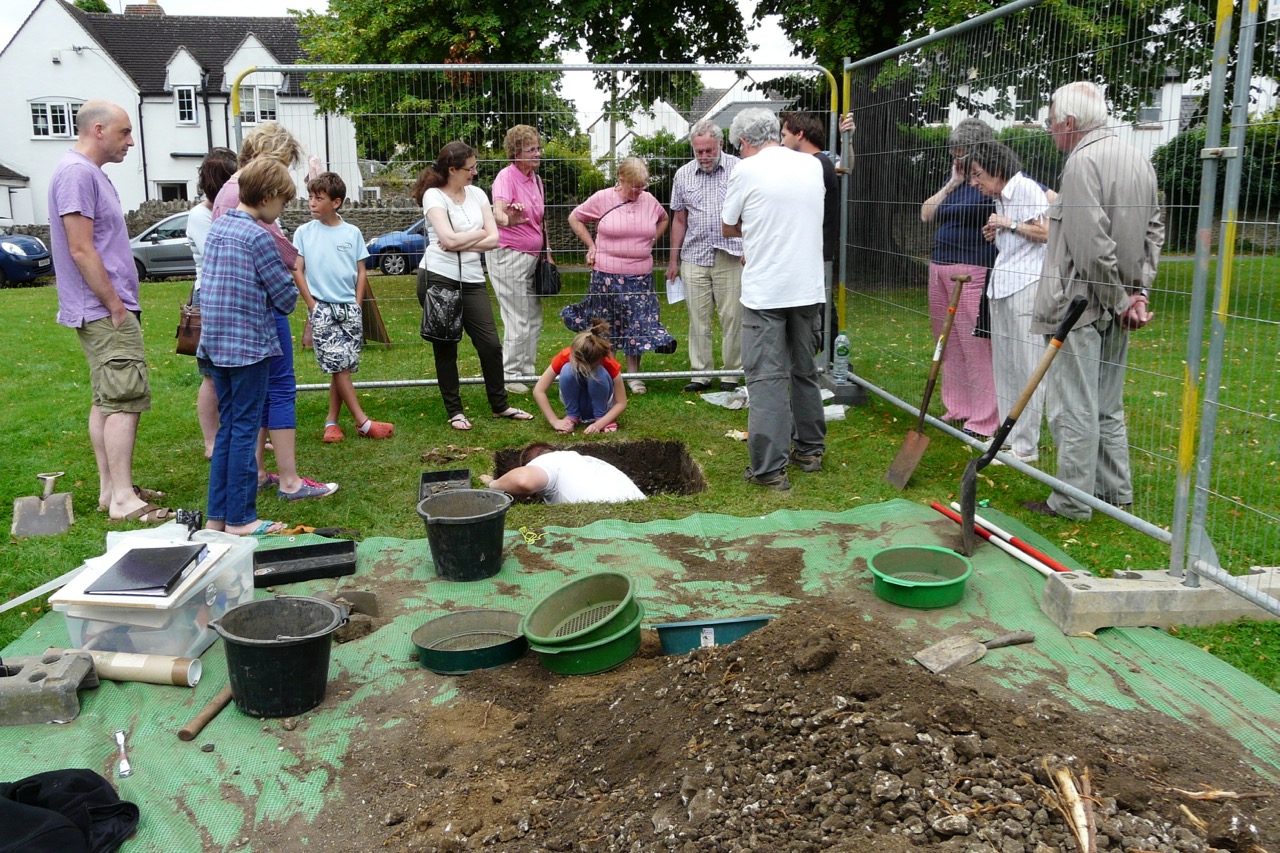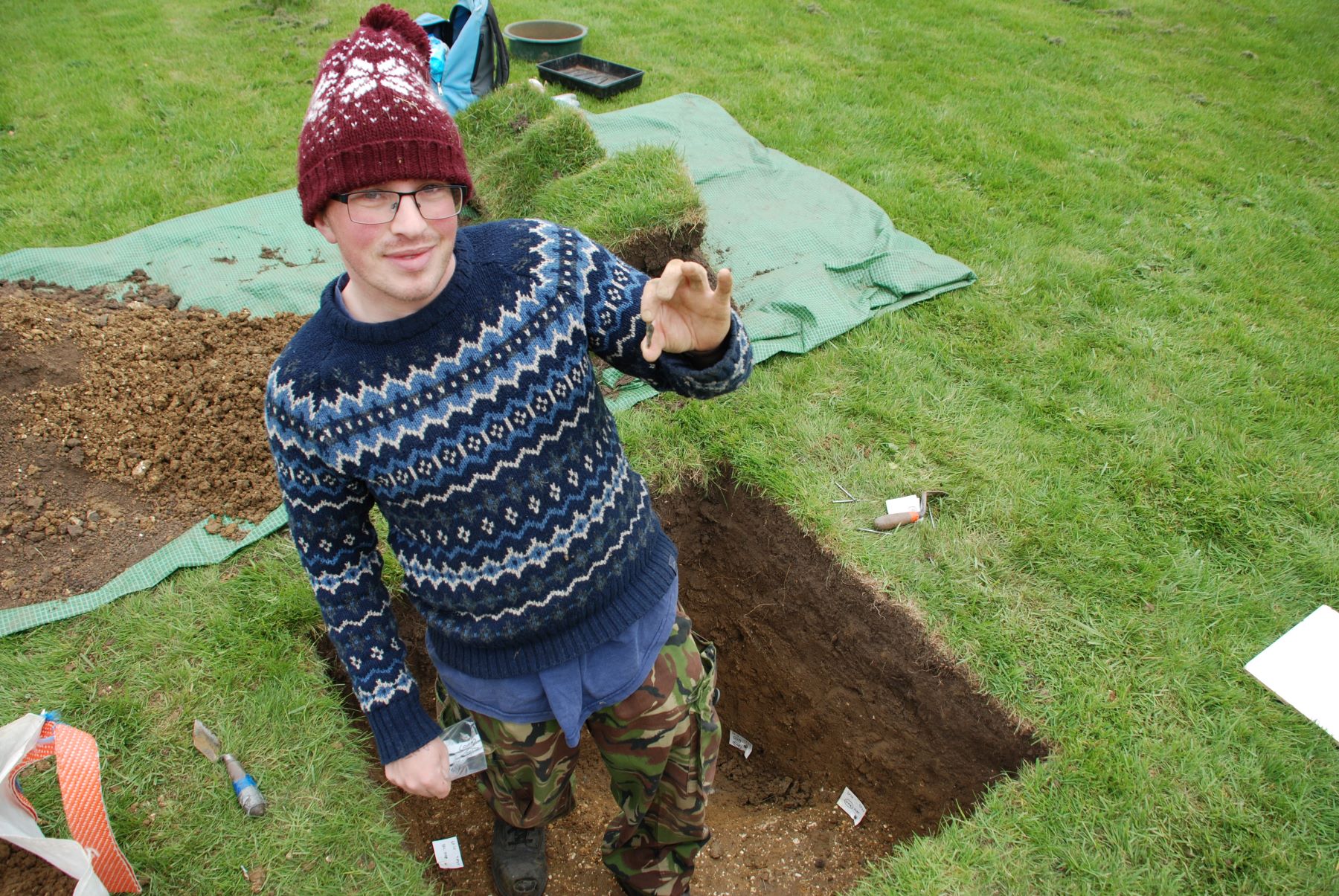
A community archaeology project which has helped rewrite the history of an English village is the subject of a new book by a University of Winchester academic.
Dr David Ashby, Laboratory Manager for the Archaeology, Anthropology, Geography and Forensics departments at the University, is the author of Stanford in the Vale, The Hidden Past Revealed.
For 16 years David has been running the Stanford in the Vale Archaeological Research Project (SVARP) which began when he was overseeing an excavation being undertaken by the local village Scout group for their heritage badge.
“We dug a few test pits which I thought would throw up nothing but Victorian rubbish but instead we found a lot of medieval pottery, a cobbled surface and the remains of a stone building,” said David.
On the back of these finds, David formed SVARP, which, with volunteers, has made finds dating back 10,000 years.
 Community digs have unearthed evidence of a previously unknown Neolithic settlement, Iron Age and Roman fortifications and large Saxon settlement.
Community digs have unearthed evidence of a previously unknown Neolithic settlement, Iron Age and Roman fortifications and large Saxon settlement.
People have lived on the site of village since the Neolithic, 4000BCE, making it one of the longest continually inhabited communities in the country.
It was home to glass, copper and iron working and was a prosperous commercial centre during the medieval period (possibly a town) until the late 14th or early 15th century when a combination of disease and the ‘little ice age’ sent Stanford’s fortunes into decline. However, the village slowly recovered to become the prosperous community of 2,000 plus inhabitants of today.
David, who grew up nearby, took up archaeology at a young age and the Stanford project has fed into his Undergraduate, Masters and PhD studies – all of which were undertaken at the University of Winchester.
In turn the project has provided a practical classroom for several generations of Winchester archaeological students who have helped dig test pits in the village and process the finds.
Stanford in the Vale is ideal for study as it produced remains from so many different periods of history within a small area, explained David.

Sixty-three test pits and 19 evaluation trenches, dug in private gardens and fields, have yielded more than 1,000 shards of pottery.
“You dig a test pit in someone’s garden, you get 10,000 years’ of history in a square metre,” said David. “And every test pit gives us something new.”
David’s book was launched at a special event held at Stanford in the Vale Village Hall on 8 September when David gave a talk about the project.
Stanford in the Vale, The Hidden Past Revealed is published by Stanford Publishing Limited, priced £10. (plus p&P). Books can be purchased directly from the publisher, either by emailing, enquiries@stanfordpublishing.co.uk or from www.stanfordpublishing.co.uk.
Back to media centre